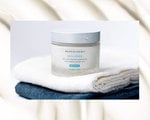7 Skin Conditions That You May Be Mistaking for Breakouts
June 21, 2023Milia
Milia are little white or yellow bumps that resemble white heads but feel firm. “They are essentially cysts caused by skin debris becoming trapped underneath the skin's surface,” says Dr. Carmen Castilla, a board-certified dermatologist based in New York City. According to Dr. Loretta Ciraldo, board-certified dermatologist and founder of Dr. Loretta Skincare, they’re miniature versions of sebaceous cysts.
“Milia most commonly develops from trauma or heavy ingredients that clog the pores and initiate the process of milia formation,” explains Dr. Loretta. Other potential causes include sun exposure or a genetic condition, as outlined by The Cleveland Clinic.
The easiest ways to prevent milia are to avoid harshly rubbing your skin and to stick to lightweight skincare products rather than occlusive or greasy creams. Chemical exfoliators can also help address the issue. “If these changes do not help, then manual extraction by a board-certified dermatologist can help get rid of them,” says Dr. Castilla.
Rosacea
“Rosacea, also called acne rosacea, is a skin disorder of facial skin that has three main components that can manifest together or as isolated changes,” explains Dr. Loretta. “These are facial redness, including broken or enlarged blood vessels, especially in the center of the face, acne and/or swelling of the nose so it looks bulbous.”
Though rosacea is sometimes called acne rosacea, it differs from classic acne in that you won’t see blackheads or whiteheads. Instead, says Dr. Castilla, rosacea bumps are red or pus-filled bumps and they tend to appear in the middle of your cheeks or on your nose.
“The sun will worsen rosacea,” warns Dr. Loretta. “If you believe you have rosacea, it is important to wear SPF everyday all year long.” Other environmental and dietary triggers for rosacea include hot water, spicy food and alcohol, she says. She recommends cutting down on dietary triggers, as well as using hydrating products in your skincare routine.
Folliculitis
According to Dr. Castilla, folliculitis occurs when your hair follicle gets infected or inflamed. “This presents as red papules or pus bumps at the base of a hair follicle,” she says. “The beard area is a common location. These can be caused by a bacterial infection of the hair follicle, a common etiology being not cleaning or changing razors regularly.”

Pityrosporum Folliculitis
Generally appearing on the forehead or chest, pityrosporum folliculitis manifests as small white bumps. “[Pityrosporum] folliculitis is caused by a yeast, as opposed to acne which is associated with bacteria,” says Dr. Loretta. Pityrosporum folliculitis “has a tendency to be itchy which can help distinguish it from acne,” notes Dr. Castilla.
Perioral Dermatitis
The American Academy of Dermatology describes perioral dermatitis as a rash around your mouth “that often looks like small, red acne-like breakouts.” Per Dr. Castilla, the exact cause is unknown, but potential causes may include using a topical steroid for too long or irritation from too many skincare products.
Keratosis Pilaris
According to The Cleveland Clinic, keratosis pilaris is a common, harmless skin condition in which small, rough bumps appear on your arms, legs or butt. Keratosis pilaris often resolves itself or gets less severe with age. If the dry, rough skin bothers you, try exfoliating and moisturizing regularly, recommends Dr. Castilla.
Staph Infection
“Staph infection can mimic a large painful pimple,” says Dr. Castilla. “Treatment typically requires prescription oral or topical antibiotics.”

























